From the bustling streets of Bangkok to the serene temples of Kyoto, Asian cuisine has captivated food lovers worldwide with its bold flavors and diverse cooking techniques. The rich tapestry of Asian food culture spans thousands of years, blending ancient traditions with modern innovations that continue to influence global gastronomy.
Each region brings its own unique perspective to the table, whether it’s China’s legendary dim sum, Japan’s pristine sushi, or Vietnam’s aromatic pho. What makes Asian cuisine truly special isn’t just the food itself – it’s the deep-rooted cultural significance behind every dish. From the precise arrangement of a bento box to the communal experience of Korean barbecue, these culinary traditions tell stories of family, celebration and heritage that have endured for generations.
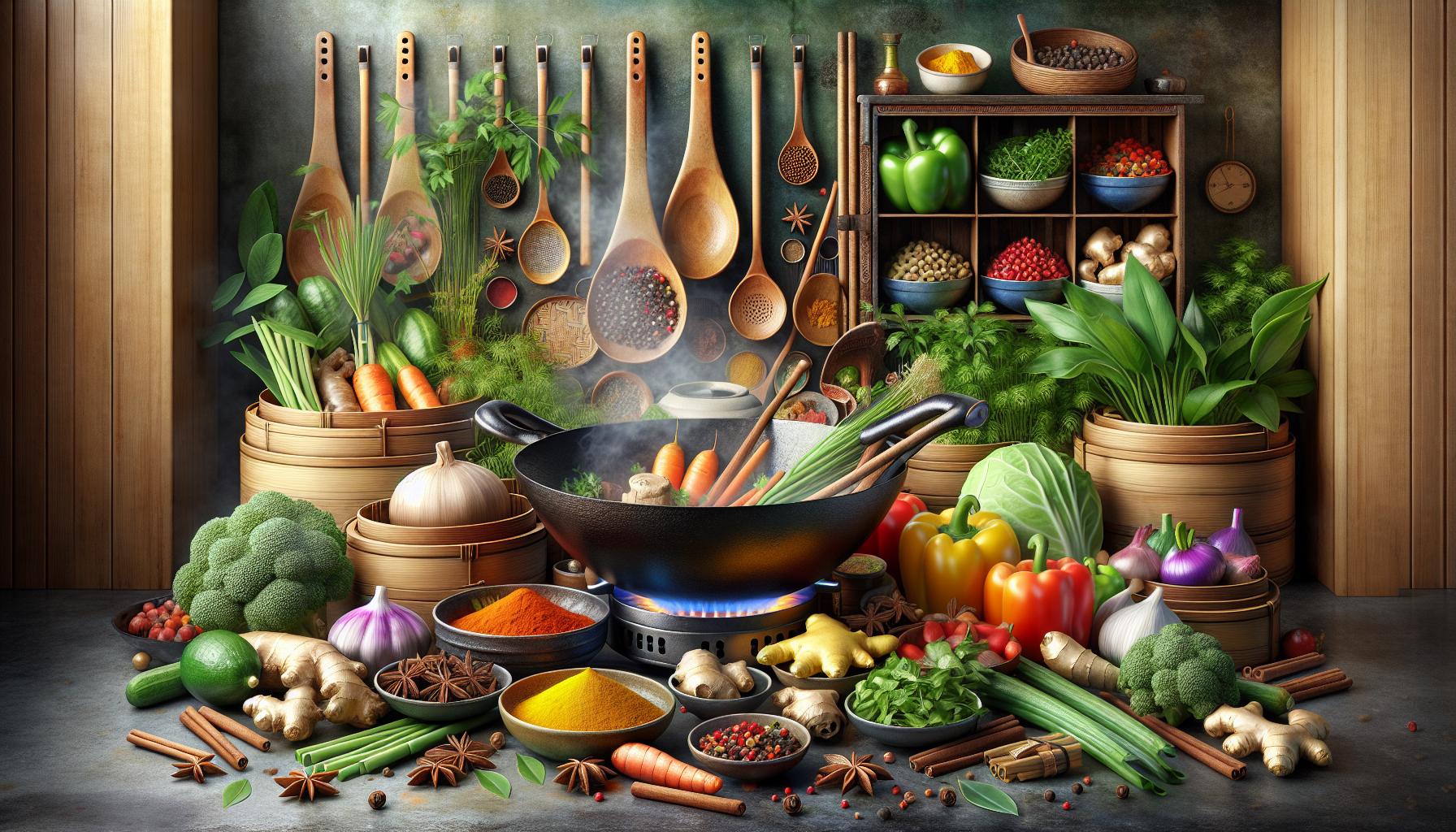 Asian Culture Food
Asian Culture Food
Asian cuisine embodies centuries of culinary traditions passed down through generations. The diverse cooking methods techniques reflect the cultural identity geographic influences of each region.
Cultural Significance of Food in Asia
Food rituals in Asian cultures extend beyond mere sustenance to symbolize prosperity health harmony. Each dish carries specific meanings: dumplings represent wealth in Chinese New Year celebrations noodles symbolize longevity in birthday feasts rice signifies abundance across the continent. Religious customs shape dietary practices such as Buddhist vegetarian traditions Islamic halal requirements Hindu cow veneration. Family gatherings center around shared meals with elders teaching younger generations traditional recipes cooking techniques proper etiquette.
Regional Food Traditions
Distinct culinary practices characterize different Asian regions. Northern Chinese cuisine features wheat-based dishes dumplings hearty stews while Southern Chinese cooking emphasizes rice seafood light sauces. Japanese cuisine celebrates seasonal ingredients through kaiseki dining minimalist presentation precise knife skills. Korean food traditions incorporate fermented dishes like kimchi banchan side dishes communal dining styles. Southeast Asian cuisines blend sweet sour spicy flavors using ingredients like lemongrass coconut milk chili peppers. South Asian cooking features complex spice blends tandoor cooking methods vegetarian dishes influenced by religious dietary laws.
| Region | Key Ingredients | Signature Cooking Methods |
|---|---|---|
| East Asia | Rice soy sauce seafood | Stir-frying steaming braising |
| Southeast Asia | Coconut milk herbs spices | Grilling fermentation wok cooking |
| South Asia | Lentils yogurt spice blends | Tandoor cooking tempering curry-making |
Essential Asian Ingredients and Cooking Methods
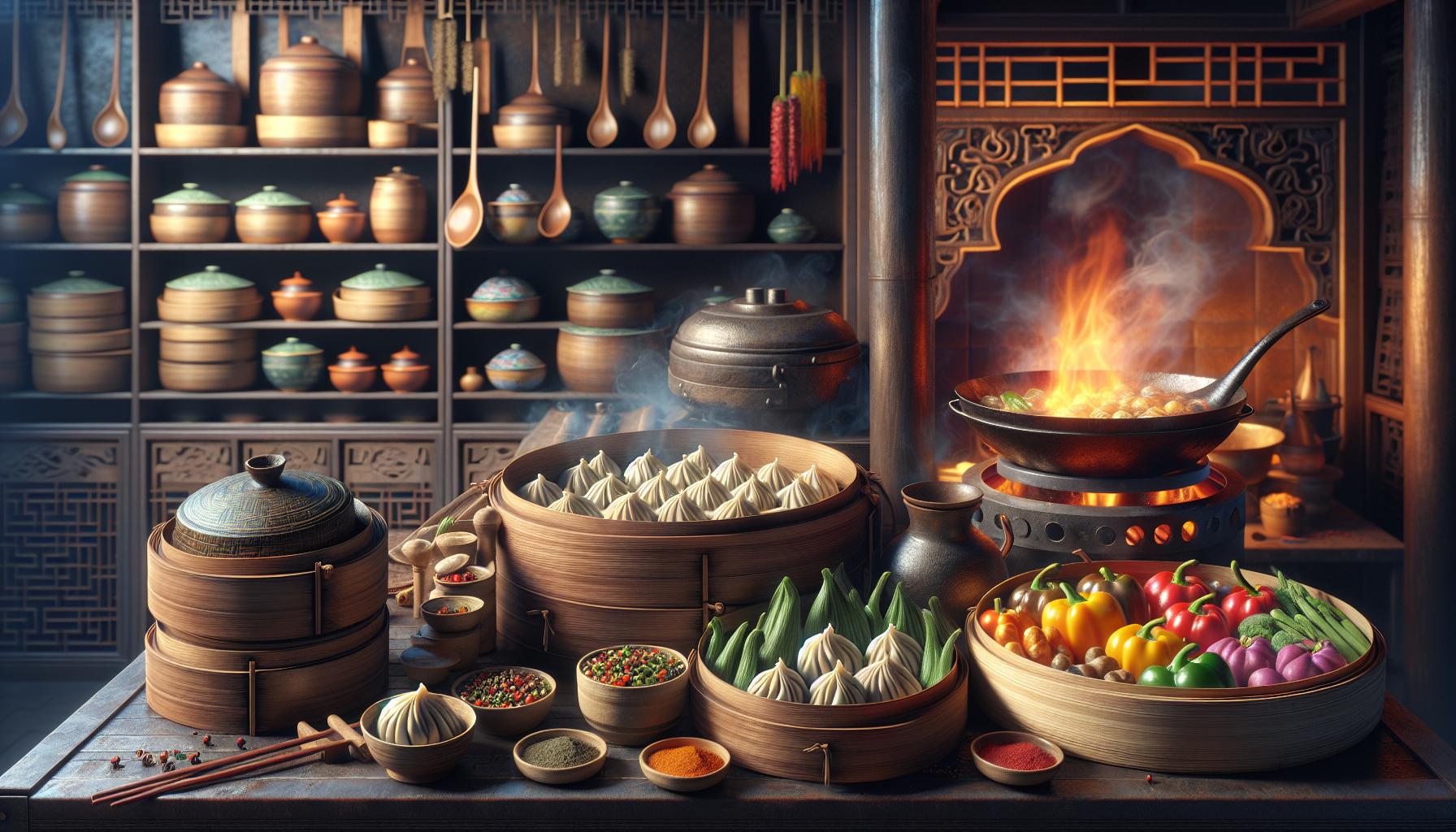
Asian cuisine relies on specific ingredients and time-honored cooking methods that create distinctive flavors and textures. These elements form the foundation of traditional Asian dishes across diverse regions.
Common Spices and Seasonings
Essential Asian spices include star anise ginger cinnamon cloves cardamom turmeric. Key seasonings incorporate:
- Soy sauce: Dark fermented soybeans add umami depth to Chinese Japanese Korean dishes
- Fish sauce: Anchovy-based liquid brings saltiness to Thai Vietnamese Cambodian recipes
- Miso paste: Fermented soybeans create rich savory notes in Japanese cooking
- Five-spice powder: Blend of star anise cloves cinnamon fennel Sichuan peppercorns
- Sesame oil: Toasted seeds produce nutty aroma in East Asian dishes
- Shrimp paste: Fermented dried shrimp adds complexity to Southeast Asian curries
Traditional Cooking Methods
Asian cooking techniques preserve nutrients while maximizing flavor:
- Stir-frying: Quick cooking in wok over high heat maintains vegetable crispness
- Steaming: Bamboo baskets create tender dumplings rice dishes seafood
- Braising: Slow cooking in liquid produces tender meat dishes like Chinese red-cooked pork
- Deep-frying: Flash cooking in hot oil creates tempura Vietnamese spring rolls
- Grilling: Robata charcoal methods yield Japanese yakitori Korean barbecue
- Fermenting: Preservation technique produces kimchi pickled vegetables miso
| Tool | Use | Region |
|---|---|---|
| Wok | High-heat cooking | China Southeast Asia |
| Bamboo steamer | Gentle steam cooking | East Asia |
| Clay pot | Slow braising | Southeast Asia |
| Tandoor | High-temperature baking | South Asia |
Popular Asian Dishes Across Regions
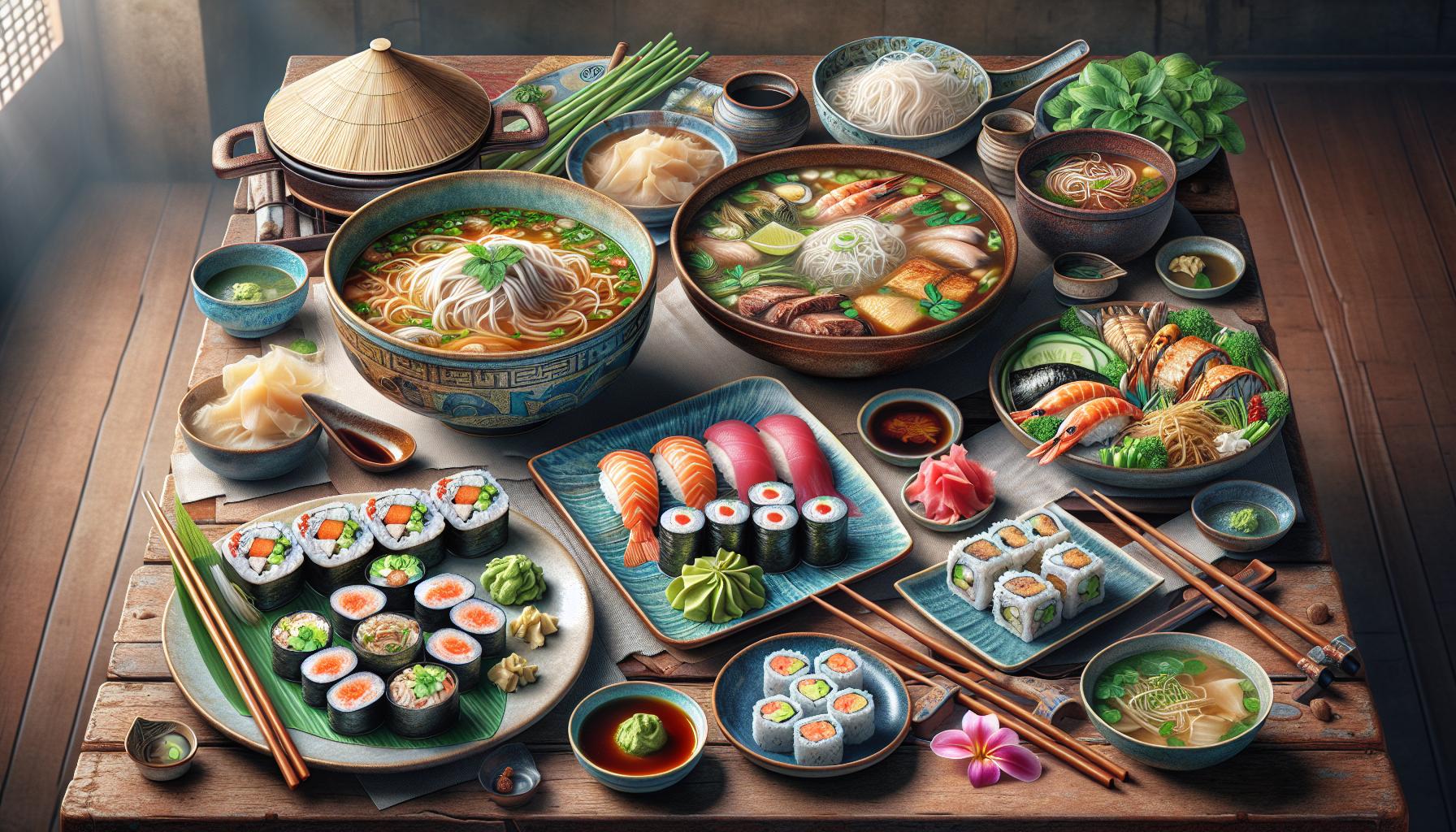
Asian cuisine features iconic dishes that showcase distinct regional flavors, cooking techniques, and cultural traditions. Each region contributes unique culinary masterpieces that have gained international recognition.
East Asian Classics
Chinese cuisine presents dim sum, a collection of small plates including steamed dumplings, buns, and rolls served with tea. Japanese sushi combines vinegared rice with raw fish, vegetables, or eggs in various forms like nigiri, maki, and temaki. Korean bibimbap layers rice, vegetables, meat, and gochujang sauce in a hot stone bowl, creating crispy rice. Japanese ramen features wheat noodles in rich broths topped with chashu pork, soft-boiled eggs, and nori. Chinese hot pot encourages communal dining with raw ingredients cooked in flavored broths at the table.
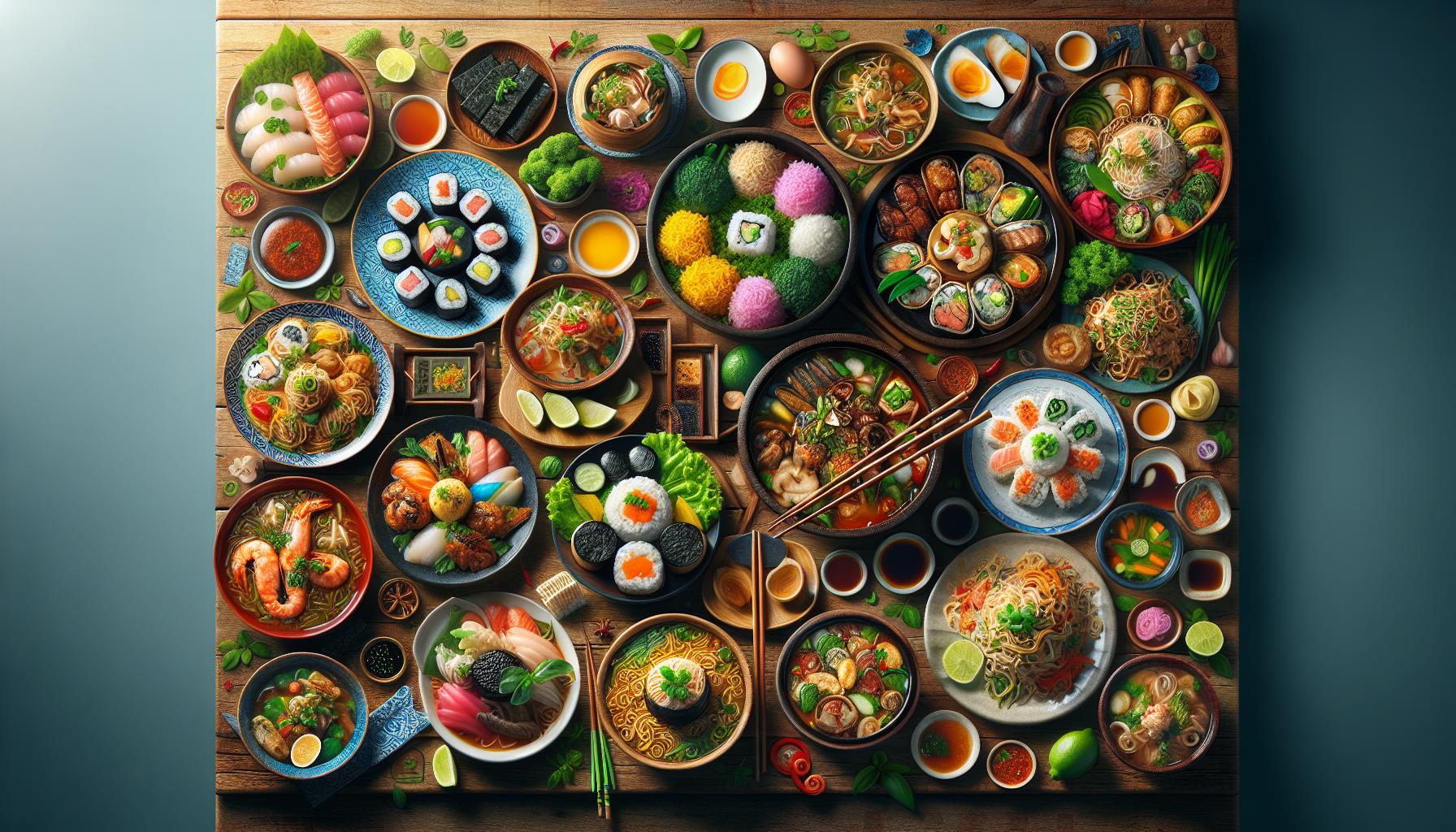 Southeast Asian Favorites
Southeast Asian Favorites
Vietnamese pho combines rice noodles with beef or chicken in an aromatic broth enhanced by herbs and lime. Thai pad thai features stir-fried rice noodles with tofu, shrimp, peanuts, and tamarind sauce. Indonesian nasi goreng transforms leftover rice into a flavorful dish with kecap manis, shrimp paste, and fried egg. Malaysian laksa blends coconut milk curry with rice noodles, seafood, and fresh herbs. Filipino adobo marinates chicken or pork in vinegar, soy sauce, and garlic before slow cooking. Singaporean chili crab showcases fresh crab in a sweet-spicy tomato and egg sauce.
The Art of Asian Food Presentation
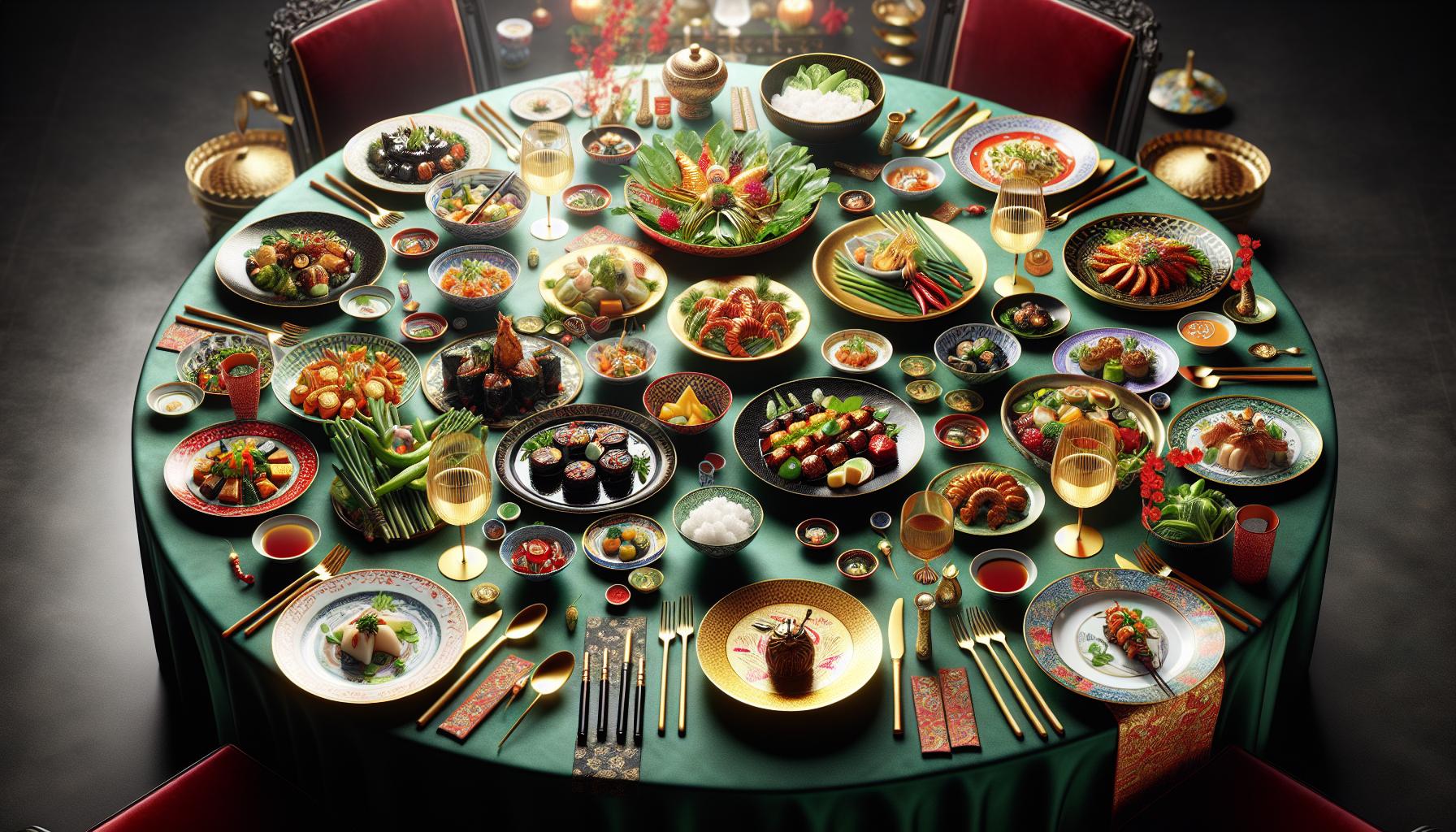
Asian food presentation transforms meals into visual masterpieces through meticulous attention to color, texture balance and spatial arrangement. Each element carries deep cultural significance that extends beyond mere aesthetics.
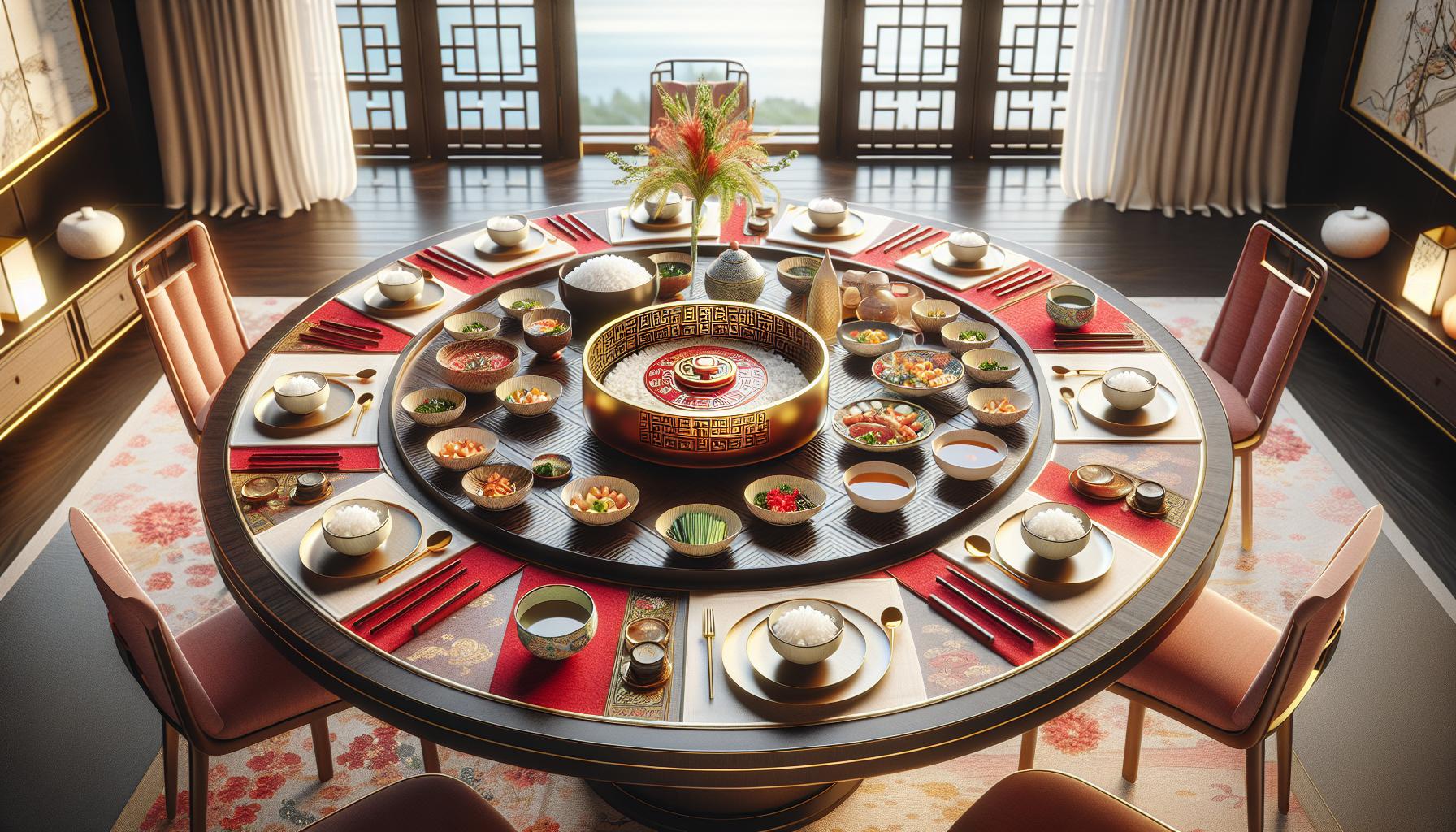 Cultural Symbolism in Plating
Cultural Symbolism in Plating
Asian plating techniques incorporate specific symbols that represent prosperity fortune health. Red garnishes signify good luck in Chinese cuisine while Japanese presentations feature odd-numbered arrangements to honor Buddhist traditions. Colors play vital roles: black sesame seeds represent immortality purple yams indicate royalty green vegetables symbolize new beginnings. Geometric patterns emerge in Korean banchan presentations with five colors (red yellow green white black) reflecting the elements of traditional oriental medicine. Food arrangements often mirror natural landscapes with careful placement of ingredients creating mountains rivers clouds.
Traditional Table Etiquette
Asian dining customs emphasize harmony respect through specific serving presentations. Japanese tables feature individual lacquer bowls positioned left to right: rice soup main dishes small plates. Chinese round tables incorporate lazy susans enabling equal access to shared dishes placed in specific sequences. Korean table settings arrange banchan dishes in clockwise order with rice bowls positioned at 5 o’clock soup at 7 o’clock. Thai meals present all dishes simultaneously encouraging communal dining with specified spoon fork combinations. Vietnamese tables feature individual rice bowls with shared platters arranged by food type: vegetables proteins soups.
| Culture | Key Presentation Elements | Symbolic Colors |
|---|---|---|
| Chinese | Round platters, balance | Red, Gold |
| Japanese | Individual portions, odd numbers | Black, White |
| Korean | Five-color harmony | Red, Blue, Yellow, White, Black |
| Thai | Communal platters | Green, Yellow |
| Vietnamese | Compartmentalized serving | Green, Red |
Modern Influence of Asian Cuisine
Asian cuisine continues to shape contemporary food culture through innovative fusion concepts and expanding global reach. Modern interpretations blend traditional Asian cooking methods with international flavors, creating unique culinary experiences.
Fusion Food Evolution
Asian fusion cuisine emerged in the 1960s, combining traditional Asian ingredients with Western cooking techniques. Korean-Mexican tacos pair kimchi with tortillas, while Japanese-Italian restaurants serve ramen carbonara. Contemporary chefs incorporate Asian flavors into classic European dishes, such as miso-glazed salmon with risotto or wasabi-infused aioli. Food trucks feature bánh mì burgers, combining Vietnamese baguettes with American-style patties. Creative desserts blend matcha green tea into French pastries, tiramisu, and ice cream flavors. These innovations respect traditional Asian cooking methods while embracing modern culinary trends.
Global Impact and Popularity
Asian restaurants populate major cities worldwide, from high-end establishments to casual dining spots. Social media platforms showcase Asian dishes to millions of viewers daily, with #AsianFood generating 32 million posts on Instagram. Popular grocery chains stock essential Asian ingredients, including sriracha sauce, gochujang paste, and miso. Food delivery services report a 135% increase in Asian cuisine orders since 2019. Cooking shows feature Asian chefs demonstrating traditional techniques to international audiences. Asian-inspired flavors appear in mainstream snack products, beverages, and ready-to-eat meals. International food festivals celebrate Asian culinary traditions, attracting thousands of attendees annually.
Dining Experiences Across the Globe
Asian cuisine stands as a testament to the power of food in preserving cultural heritage while adapting to modern tastes. From ancient cooking methods to contemporary fusion dishes the influence of Asian culinary traditions continues to grow worldwide. The artful presentation intricate flavors and meaningful customs surrounding Asian food create an experience that goes far beyond mere sustenance.
The growing global appreciation for Asian cuisine reflects its ability to bridge cultural gaps and bring people together through shared meals. As these culinary traditions evolve they maintain their authentic roots while embracing innovation creating a dynamic and ever-expanding food culture that enriches dining experiences across the globe.

